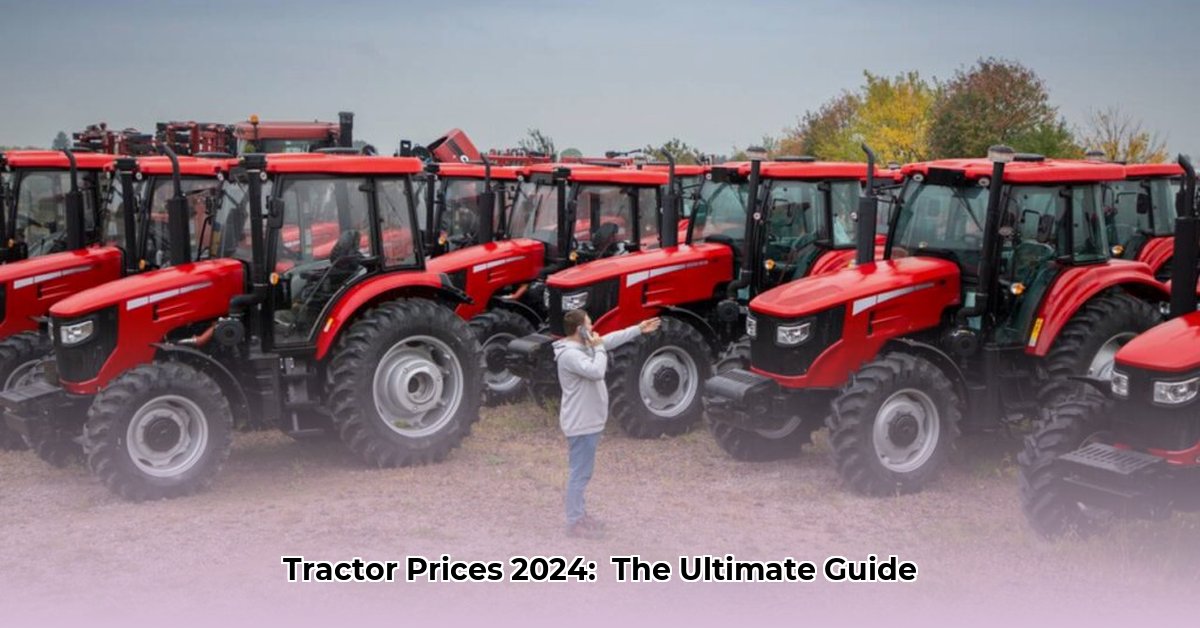
Cost of Tractor: Your Complete Guide to 2024 Prices and Smart Buying
Buying a tractor is a significant investment, regardless of whether you're a farmer, landscaper, or contractor. This comprehensive guide breaks down the costs involved, empowering you to make an informed decision. For even more detailed pricing information, check out this helpful resource: Tractor Price Guide.
New Tractor Prices: Power, Perks, and Price
New tractor prices vary dramatically based on horsepower (HP), a measure of engine power. A small tractor (under 30 HP), suitable for landscaping, might cost $9,000-$15,000. Mid-size tractors (30-80 HP), ideal for many farms, range from $25,000 to $60,000. High-HP tractors (over 80 HP) for serious farm work start at $80,000 and can exceed $500,000 for specialized models. Beyond horsepower, features like air conditioning, GPS, and automation significantly increase the price. Brand reputation also influences cost; some manufacturers command higher prices due to their reputation for reliability. Isn't it crucial to understand these cost drivers before committing to a purchase?
Used Tractor Costs and Considerations
Buying used offers potential savings; however, thorough inspections are paramount. Carefully assess the tractor's maintenance history, looking for wear and tear that could lead to costly repairs. Investigate parts availability for older models, as sourcing parts for older equipment can become significantly more challenging and expensive. While a used tractor may seem like a great deal initially, unforeseen repairs can quickly negate any savings.
Attachment Costs: The Hidden Expenses
Attachments are essential for tractor functionality. While a simple rake might cost a few hundred dollars, a backhoe can easily add several thousand. These costs often represent 10-20% or more of the tractor's initial price. Remember to factor these expenses into your budget and ensure compatibility between the tractor and attachments. Failing to do so will result in increased overall costs and decreased productivity.
Financing Your Tractor: Securing the Investment
Financing options, such as bank loans and agricultural lenders, are readily available. Government subsidies or farm loan programs might be accessible, depending on your location and circumstances. It is strongly advised to secure financing before purchasing to establish a clear budget and avoid impulsive decisions.
Factors Affecting Tractor Costs: Beyond Horsepower
Beyond HP, several factors influence cost: Brand reputation, though influential, isn't always directly connected to performance differences. Fuel efficiency significantly impacts long-term costs; a fuel-efficient tractor will save money over its lifespan. Advanced technology, while increasing the upfront investment, can boost productivity, potentially offsetting costs in the long run. How do you balance these factors to optimize your investment?
Actionable Advice: Tailored Strategies
The ideal tractor depends on your specific needs:
- Farmers: Thoroughly assess new vs. used tractors, prioritizing thorough inspections if opting for a used machine. Secure financing beforehand and budget for regular maintenance.
- Landscapers/Contractors: Choose a tractor with appropriate horsepower for your projects and prioritize versatile attachments.
- Investors: Analyze the ROI carefully, factoring in resale value and potential rental income. Understanding the total cost of ownership (TCO) is crucial for long-term profitability.
Risk Assessment: Mitigating Potential Issues
Purchasing a tractor carries inherent risks:
| Risk Factor | Probability | Impact | Mitigation |
|---|---|---|---|
| Mechanical Issues (Used) | Medium | High | Thorough pre-purchase inspection; mechanic's evaluation; warranty if available; dedicated repair fund |
| Attachment Incompatibility | Low | Medium | Research compatibility; prioritize same-brand attachments |
| Financing Challenges | Low | Medium | Explore multiple options; secure approval before purchase |
| Technological Malfunctions | Low | Medium | Choose reputable brands; factor in scheduled maintenance |
Regulatory Compliance: Staying Legal
Familiarize yourself with emissions standards and safety regulations (such as ROPS—Roll Over Protection Structures) in your area. These vary regionally and impact permissible modifications and attachments. Non-compliance can result in fines or legal issues.
Conclusion: Prioritize Planning
Buying a tractor is a substantial investment. Thorough research, planning, and budgeting are crucial for success. Don't rush the process; compare options, explore financing, and prepare for potential challenges. A well-chosen tractor will serve as a productive asset for many years to come.